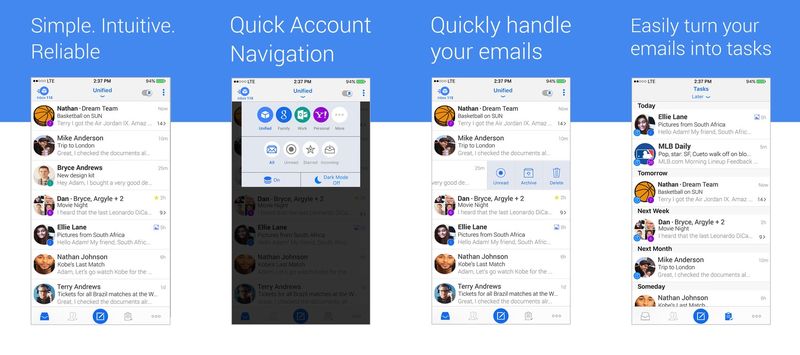Blue Mail for PC Windows 7/8.1/10/11 (32-bit or 64-bit) & Mac
Blue Mail for PC Windows 7/8.1/10/11 (32-bit or 64-bit) & Mac

This tool may be handy for email checking and usage because of the simple and well-designed interface.
Blue Mail is a complete and powerful email application for your Android device capable of providing support for many services.
There aren’t all that many good email apps for Android. Most of the solutions in the Google Play Store are mediocre at best, but that’s not the case with Blue Mail. The application is complex and has support for all of the available protocols and services.
Why I Stopped Using Blue Mail (Type Mail)
I came across Blue Mail while looking for better-than-the-default email clients for my Android device. Pretty interface, handled my IMAP settings well and had nifty turn-any-message-into-a-reminder functionality. (The name of the app has since been changed to “Type.”)
No support for aliases or identities was a bummer – the address I want my messages coming from does not precisely match the hostname of my mail server. But when I emailed the support folks about it, I got a quick reply about it coming soon.
Fast forward a few weeks when I was noodling around and wondering what network traffic my phone was doing when I did routine tasks. I ran a tcpdump on my home router to capture some traffic and loaded it into Wireshark to investigate.
Most of the traffic looked familiar: IMAP and SMTP to my mail servers, HTTP to some web hosts I browsed. But there was a connection to port 10101 on an address that resolved to an AWS host. The payload was garbled – probably TLS. What was it?
A quick brew install android-sdk and android update sdk --no-ui --filter 'platform-tools' later, I could fire up adb shell and grep for 2775 (hex of 10101 base 10) in /proc/*/net/tcp6 to find the culprit. Another StackExchange page helped me map the UID to the process name. Which was com.trtf.blue – Blue Mail.
I asked Blue Mail support why the client was connected to this host/port, and they said, “Blue Mail uses AWS currently for its proxy/push services, which are secured and encrypted.” Then I asked them if I could disable it by changing the “Push or Fetch” setting to “Fetch” in my account settings.
This is where things went off the rails a bit. Instead of saying “Yes” or “No, we need to do this for Blue Mail’s awesome features like storing reminders,” I got some enthusiastic but evasive responses about how a client-only solution can’t do things like sending scheduled emails when my device is turned off and that “Blue Mail is a modern Email service that will feature dozens of such capabilities.”
I appreciate that the (anonymous) developers of this app have big plans for their service (and that they claim not to store my emails on their servers), but the combination of their evasive responses, no available information about who is developing the app (the domain is registered via Domains By Proxy), and an unknown amount of my info flowing to places I control means no more Blue Mail for me.
Author’s Opinion regarding the Blue Mail for PC Windows 7/8.1/10/11 (32-bit or 64-bit) & Mac
The Blue Mail for PC has compelling features while considering the security purpose; priority is very high. No VPN or RDP is required for the said purpose. In some cases, the emulator also works fine, and middleware software also has a vital role in smooth functioning. Therefore, the author recommended the Blue Mail for PC for your personal use and has no issue regarding the installation on PC (Windows 7/8.1/10/11 and Mac). I hope you also use it without any trouble; if you have any issues, please mention them in the email, and we will provide you with proper solutions. Please like and share with others; we made a lot of effort while collecting the software for your download.
